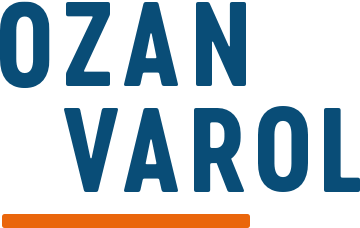We’ve all heard the story of the lone genius.
Steve Jobs building the first Apple computer in the garage of his family home. Albert Einstein toiling away at his thought experiments as a Swiss patent clerk. Thomas Edison tinkering with prototypes to create the perfect incandescent lamp.
It makes for a great story but, like most stories, it’s a misleading depiction of how things work.
Creativity doesn’t happen in complete isolation. Breakthroughs almost always involve collaboration.
“If I have seen further,” Isaac Newton famously said, “it is by standing upon the shoulders of giants.” These giants come to the table with diverse perspectives for the collective to use.
Which brings me to the first of two reasons why work environments destroy creativity.
Most businesses give lip service to diversity, but ignore it in practice. This is particularly true for cognitive diversity—which is based on different life experiences or viewpoints that diverge from each other.
Unlike other metrics, cognitive diversity can’t be easily measured through neat checkboxes. It can’t be forced into categories.
Which means it gets ignored.
What’s more, building cognitive diversity often runs counter to our natural conditioning. We gravitate toward people who think like us. We hire people who followed the same path that we did. The ranks of elite faculties at colleges, for example, are stacked with the graduates of those same elite schools.
Hello, vicious cycle.
Businesses who buck the trend get ahead in creative output. Take, for example, Google’s notoriously secretive moonshot factory, X, which develops breakthrough technologies. X doesn’t innovate for Google. X creates the next Google.
At X, these breakthrough technologies are cultivated by a multidisciplinary team of polymaths. “The best ideas come from great teams,” X’s Obi Felten says, “not great men.”
X takes cognitive diversity to a whole new level: The company’s ranks include firefighters and seamstresses, concert pianists and diplomats, politicians and journalists. You might find an aerospace engineer working with a fashion designer or a special operations veteran throwing ideas around with a laser expert. These teams have developed moonshot projects ranging from self-driving cars to autonomous drones, from balloons that deliver Internet access to contact lenses that measure glucose levels.
Entrepreneur and writer Frans Johansson calls this phenomenon the Medici effect. It refers to the fifteenth-century creative explosion that occurred in Florence when the wealthy Medici family brought together many accomplished individuals from different walks of life—scientists, poets, sculptors, philosophers, and more. As these individuals connected, new ideas blossomed, paving the way for the Renaissance (the word means “rebirth” in French).
You might assume that today’s work environment is an ideal setting for this type of blending. Sitting in open offices, and connected through always-on technologies like email and Slack, most modern workers are constantly collaborating with each other. Maybe it’s time for a new renaissance of a modern sort that will be dubbed the Slack effect.
Not so fast. This brings me to the second reason why modern workplaces undermine creativity.
Consider the result of one study, where researchers separated the participants into three groups and asked them to solve a complex problem. The first group worked in complete isolation, the second group was in constant interaction, and the third group alternated between interaction and isolation.
The best-performing group was the third. “Intermittent breaks in interaction improve collective intelligence,” the researchers observed. Cycling between isolation and interaction improved the average score of the group while also leading the group to find the best solutions more frequently. Importantly, both low performers and high performers in the group benefited from intermittent interaction. These results suggest that learning flowed in both directions, with one person’s conclusions becoming input for the others.
Most modern work environments resemble the second, constant-interaction group. Seventy percent of offices in the United States have adopted open-plan arrangements, increasing distractions and decreasing employee satisfaction. Email and group chat apps, when overused, only exacerbate this problem.
As the research shows, connection is important, but so is time for isolated reflection. The process of creation can be embarrassing. “For every new good idea you have,” Asimov writes, “there are a hundred, ten thousand foolish ones, which you naturally do not care to display.”
Without the opportunity for isolated reflection, brainstorming sessions produce a loud echo chamber. A few people dominate the conversation, regurgitating the same points. The others self-censor and go along with the group.
People should be able to cultivate insights on their own, come together to exchange those insights with the group, and then return to working alone, cycling between solitude and collaboration—disconnection and connection.
Blending these two mental states, just like blending individuals with different backgrounds and viewpoints, is the key to boosting creativity at work.




